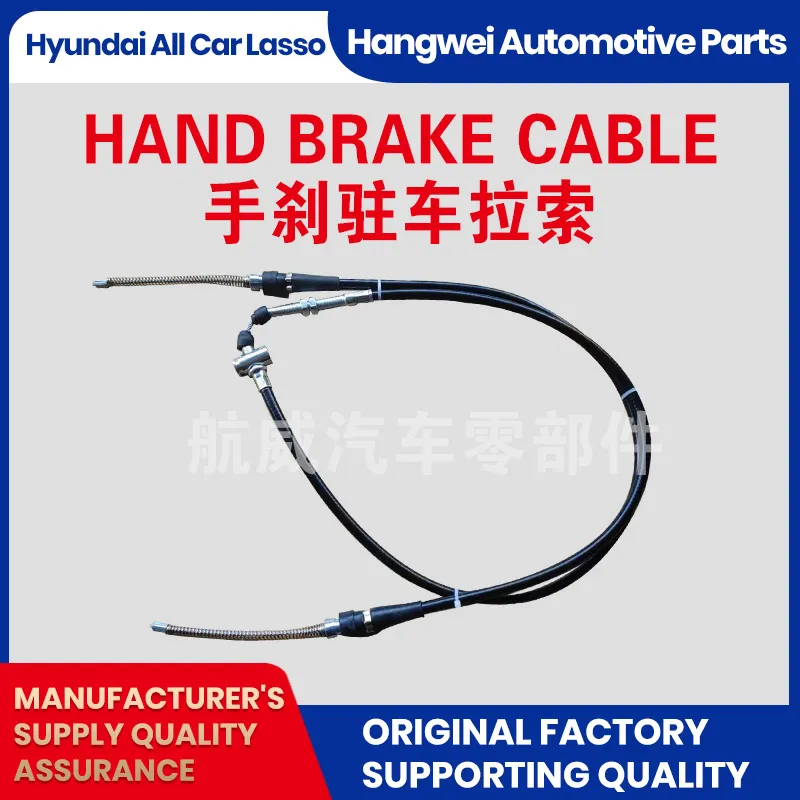Understanding the Mechanics of Derailleur Gear Cables in Bicycles and Their Performance
Understanding Derailleur Gear Cables The Unsung Heroes of Bicycle Performance
The world of cycling is a complex and intricate domain, filled with numerous components that work in harmony to provide the ultimate riding experience. Among these components, derailleur gear cables stand out as unsung heroes that often go unnoticed, yet play a crucial role in the performance and reliability of bicycle gear systems. In this article, we will explore what derailleur gear cables are, how they function, why they are important, and how to maintain and replace them when necessary.
What Are Derailleur Gear Cables?
Derailleur gear cables are the cables used in a bicycle's shifting system that connect the shifters on the handlebars to the derailleurs located near the bike's drivetrain. The primary function of these cables is to transmit the force exerted by the cyclist when shifting gears. This action moves the derailleur, which in turn shifts the chain between different gears on the cassette and chainrings.
Typically made from stainless steel or other durable materials, derailleur gear cables come in various lengths and designs to accommodate different bicycle types and setups. Over time, these cables are subject to wear and tear due to environmental exposure, friction, and regular usage, which can affect their performance.
How Do Derailleur Gear Cables Work?
When a cyclist twists the shifter on the handlebars, the shifter pulls on the derailleur gear cable. This tensioning action conveys the pull to the derailleur, which moves the chain to a different gear. The system is designed to be precise, allowing for quick and accurate shifts—an essential feature, especially in competitive cycling scenarios.
There are two primary types of derailleur systems mechanical and electronic. In mechanical systems, the cables are manually operated to control shifting. In contrast, electronic systems use motors and sensors to facilitate gear changes, reducing the physical stress on cables. Despite these advancements, many cyclists still rely on mechanical systems, making the maintenance of gear cables crucial for optimal performance.
Importance of Derailleur Gear Cables
Properly functioning derailleur gear cables are essential for multiple reasons
1. Smooth Shifting Well-maintained cables ensure that gear shifts are smooth and reliable. Poorly functioning cables can lead to missed shifts, making for a frustrating riding experience.
derailleur gear cable

2. Enhanced Performance A clean and properly tensioned cable contributes to a bike's overall performance. It prevents excess friction, ensuring that the shifting is both quick and responsive, allowing cyclists to maintain their speed and cadence.
3. Safety Properly functioning gear cables contribute to overall bike safety. When a cyclist can shift gears smoothly, they can better respond to varying terrain and conditions, reducing the risk of accidents.
4. Longevity of Components Regular maintenance of derailleur gear cables can prolong the life of the entire shifting system, including the shifters and derailleurs, ultimately saving cyclists money on repairs and replacements.
Maintenance and Replacement
Maintaining derailleur gear cables is a straightforward process that can significantly improve gear performance. Here are some key tips
- Regular Inspection Check cables for signs of fraying, rust, or damage. Pay attention to any stiffness when shifting, which may indicate internal wear.
- Cleaning Keep the cables clean and free of debris by wiping them down with a cloth. Periodic lubrication with a suitable bicycle-specific lubricant can help reduce friction and improve performance.
- Adjusting Tension Make sure the cable tension is appropriate for the shifting system. Loose cables can cause missed shifts, while overly tight cables can lead to excessive wear on the derailleur.
- Replacement If cables are worn or damaged beyond repair, replacing them is critical. This process involves removing the old cable, which can be done with basic tools, and threading a new one through the housing and connecting it to the derailleur.
Conclusion
In the world of cycling, even the most minor components can have a significant impact on performance. Derailleur gear cables may not be the flashiest part of a bike, but they are essential in ensuring that cyclists can shift efficiently and safely. By understanding their function, importance, and maintenance, cyclists can enhance their riding experience and keep their bikes in top-notch condition. Whether you're a casual rider or a competitive cyclist, paying attention to derailleur gear cables will undoubtedly lead to a more enjoyable and efficient ride.
-
Upgrade Your Clutch System with Premium Hydraulic Clutch LinesNewsJul.31,2025
-
Unlock the Power of Precision with Our Throttle CablesNewsJul.31,2025
-
Unleash Power and Precision with Our Accelerator CablesNewsJul.31,2025
-
Experience Unmatched Safety with Premium Handbrake CablesNewsJul.31,2025
-
Enhance Your Vehicle's Performance with Quality Gear CablesNewsJul.31,2025
-
Workings of Clutch Pipe and Hose SystemsNewsJun.04,2025
